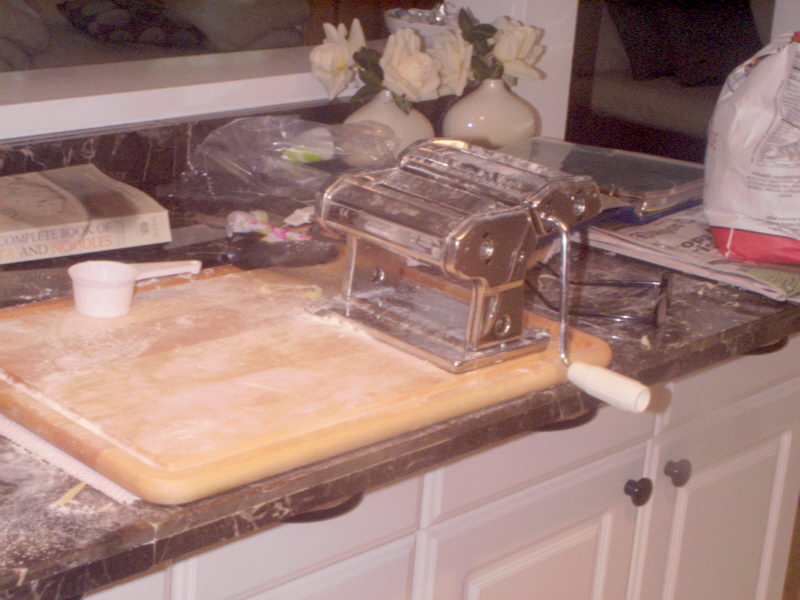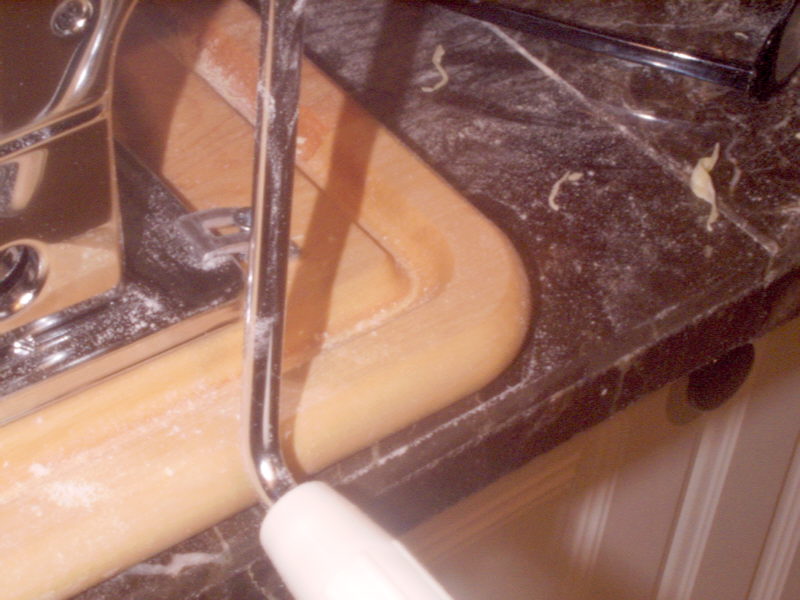August 16, 2009
Home Made Pasta and Noodles
There is nothing like homemade fresh pasta and is so much better than dried pasta and better than the fresh pasta from the Market. I make basically two kinds of dough for pasta. One I would call Italian, it has more egg and is a little more robust and doesn't hold as much sauce as a Chinese noodle for a stir fry.
Italian Pasta
I use this basic recipe for thin linguine to Fettuccine, tortellini and even make rigatoni which is a little trickier. Most of these can be done by hand with some kind of rolling device but a machine is also very helpful. I bought a machine because I couldn't get the pasta for tortellini thin enough and after I bought it I discovered a technique that worked fine, but I am also very glad I bought the machine, it makes things easier and faster with no sacrifice.
The following recipe comes from Cook Illustrated compete Pasta and Noodle book that I bought when I got the pasta maker, full of all kinds of good pasta recipes.
2 Cups APF(All Purpose Flour)
3 eggs
2 TBSP water
Mix in bowl until pasta doesn't stick to the sides of the bowl, turn out onto surface, a break board is what I use but you can use whatever you have. Knead until dough is smooth about 5 to 7 minutes. I use the additional water as needed, it depends a lot on atmospheric conditions, some days it takes a lot more water than other days. Roll out as thin as you like. If your making for instance tortellini once you get the pasta as thin as you can, cut a circle smaller than the finished product, most people use 2" to 4" diameter for tortellini, I got for the bigger it is easier to handle. So I would cut a circle about 2 1/2" to 3" now with the smaller amount of pasta you can make it as thin as you like without a machine. It is a little more work than a machine but it works.
Making Pasta with a machine
I am assuming that if you have a machine you don't need this post. The first thing you need to do is to figure out what it is you want in a machine. They range from about $30 to about $200 for the home kitchen. I personally didn't want one with a motor, just another thing to break. As it turns out a motor wouldn't really help very much. There are several good brands, most people think the ones made in Italy are better, but I am sure they all work. I have an Atlas Original, sold on Amazon for about $70 as I recall. The big complaint with all the hand crank pasta makers was that they didn't hold down very well with the included clamp. Knowing this I bought another bread board and permentally attached my pasta maker to the board. The other thing I didn't like was the drying rack that were being offered, they were flimsy and were small. So I went over to Walmart for $11 no shipping and bought a regular small clothes drying rack. I will post pictures of both before explaining a bit how to use it. The second picture is of the clamp holding the pasta maker down, I only used two, left front and right rear, works fine.



All of what I am about to say is in CI's book that is where I got it. Roll out past thin enough to fit into the machine at the biggest setting. Mine goes from 1 the largest setting to 9 which is paper thin. Paper think is usually what I want but not 100%. Run the pasta through at the largest setting, if it won't go through use the roller to make it thinner. Leave the setting on largest and fold dough to the middle from one side and then over lap the other side over so now you have a piece that is 1/3 the original length. Do this once more and then start to decrease the width between the rollers until it is where you desire. I usually got 1,3,5,7 and 9. If the dough starts to get sticky sprinkle with flour. Before actually cutting it is a good idea to coat with a light coat of flour especially if you are using the smaller blades. To clean never use water, just a pastry brush is all I use and is all that is necessary. From this basic dough you can make ravioli, tortellini and even rigatoni. Rigatoni is a little thicker probably 5 or 6 on my machine. Make or buy a metal tube that is between 1 and 2 feet long and the inside diameter of rigatoni. It will take a couple of trys to get it right but the dough can be re used. Cut dough length wise so it just over laps the metal tube. Use a little water or egg to seal and then just cut with a knife the desired length and there you go.
Chinese Noodles
I like a stir fry with Chinese Noodles. In order to get the most flavor into the noodles which is what you want, they have to be more absorbent than Italian Noodles. This recipe was not in CI's book although they had good recipes for stir fry, I think a valuable omission from the book. Here is the recipe I use and it works very well.
Chinese Noodle Recipe
Where there are only two of us I try to keep everything in small quantities, but you can multiply the recipe to suit your needs. One of my friends on Cook Illustrated Bulletin board helped me with this. I use King Arthur Flour that has more gluten than say Gold Metal, if yours has less use less corn starch.
1 cup APF
1/4 cup Corn Starch
1/4 Wheat Flour
1 egg
2 - 5 TBSP Water
It is hard to say how much water to use there are so many factors, just work with it until it is not sticky and workable. Of course Knead for 5 to 7 minutes.